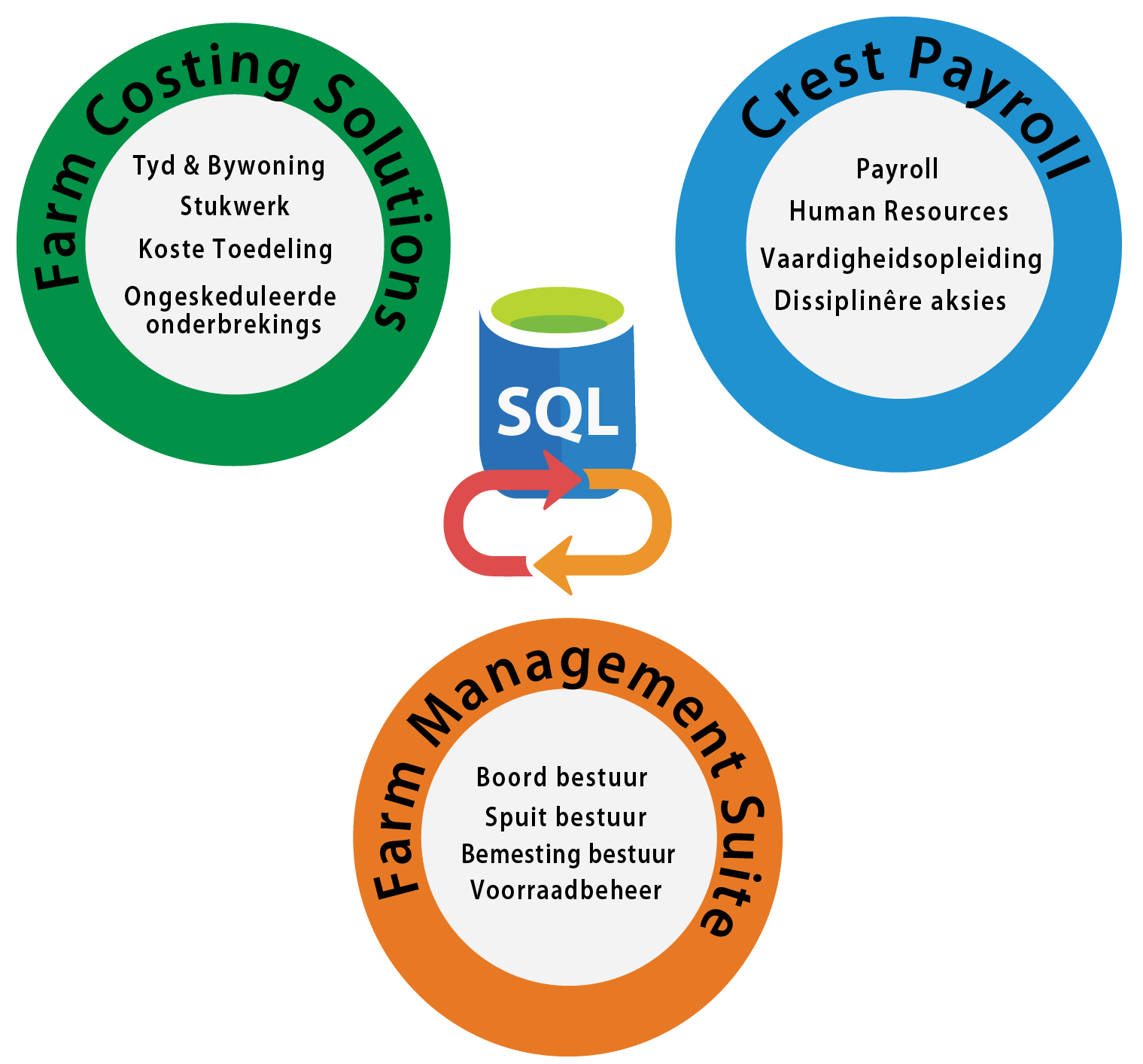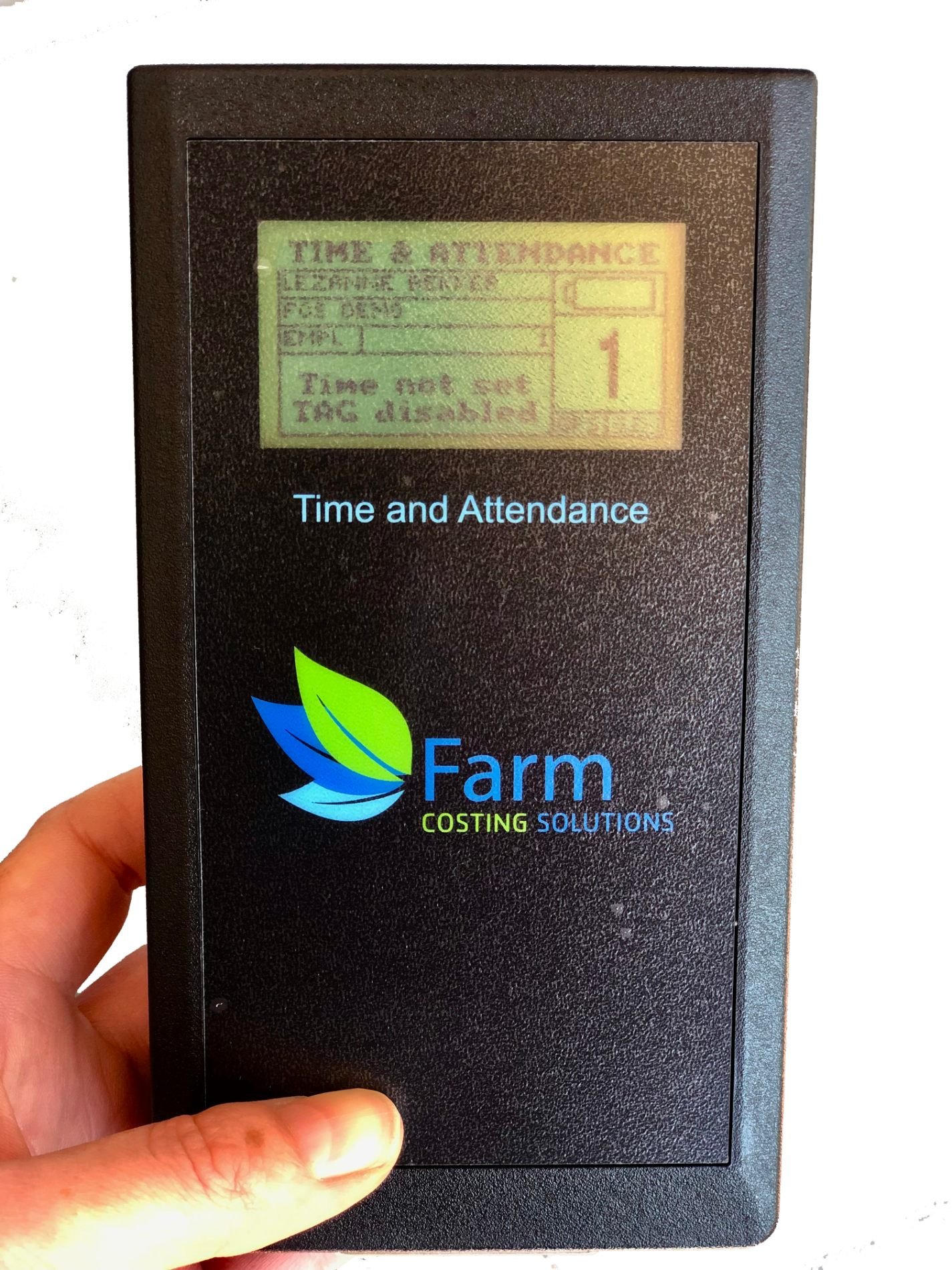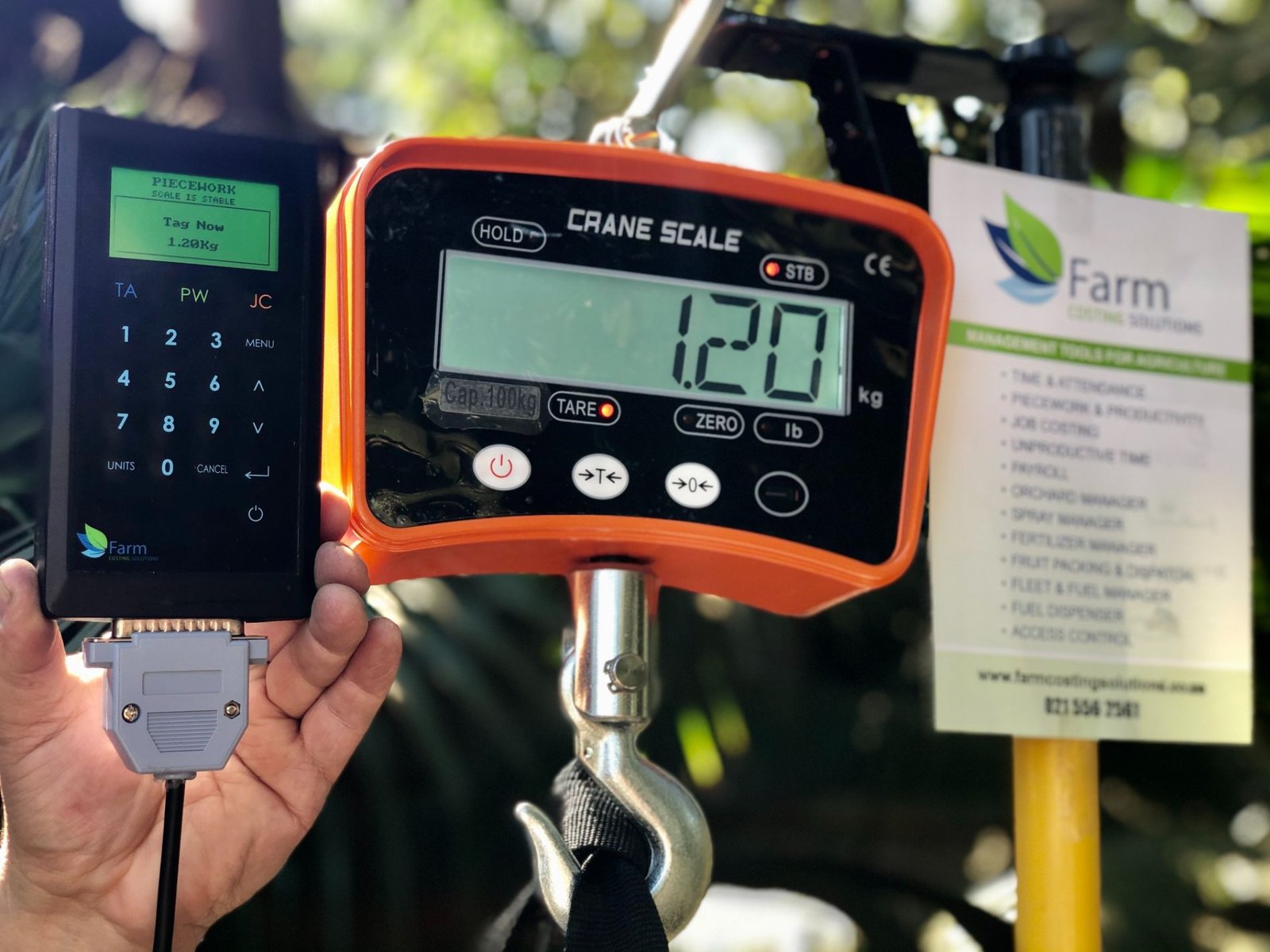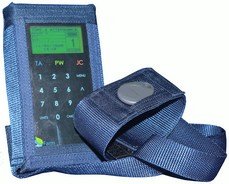Features & Advantages
An Overview of the Features and differences are listed below:
The V5 is smaller. It can fit into your pocket.
The V5 is more user-friendly and robust.
The keypad now has three Colour Coded buttons TA (Blue), PW (Green), and JC (Orange) thus preventing clocking in wrong modes. (These colours also tie up with the colours of the module in the FCS program).
The User Interface on the V5 Reader is far more user-friendly since it displays the Employee’s Name, Surname, and Number. (On the old reader only the Tag Number was displayed). Additional information displayed includes the Orchard, Activity, and Variety numbers, and descriptions.
A larger display is used with more details displayed, including Cost Centre and employee information.
The Cost Centre data is now stored on the reader and can be selected via drop-down tables, thus avoiding errors in typing in the wrong Orchard, Activity, or Variety. These tables are automatically uploaded to the reader while plugged in during the night or via GSM where used.
The Employee file can be uploaded to and stored on the reader. This information will be used in the field to display the details of the person clocking on the reader.
When clocking PW units the reader will show the total units done per person each time they clock.
Totals shown per module. In the TA and JC modules the reader shows the total number of employees that clocked. In the PW module it shows the total number employees and total units that were clocked by the team.
The Re-swipe timer is now stored on the Reader. Re-swipes (double clocking) is used to identify employees that are trying to pick faster than possible in piecework. It will automatically identify a re-swipe under the time allowed. This will result in an alert “beep” and will also be displayed on the reader. The old reader (V4) did not have this capability since the processing was only done on the computer.
The reader stores the data on an onboard SD Card, affording in excess of 60 million transactions compared to only 21,500 on the old reader. This also means that data cannot be lost. In the event of the reader being damaged intentionally or accidentally and unable to download the data, the SD card can be removed and plugged into an SD Card reader or laptop that has a built-in SD Card reader. Thus also avoiding corruption of data.
GPS is built into the reader and stores the coordinates for each employee clocking. This information can be used in the software to determine where clocking’s were made.
A GSM Modem interface is built into the reader. Along with a sim card from the preferred service provider, this will allow the download of data remotely. The reader will send current data to the client’s FCS system. This live data will give management updates in the software as the day progresses. Attendance and productivity can be monitored. Updated employee, orchard, and activity data will be uploaded to the reader automatically. We are also able to remotely upgrade a V5 reader when GSM is used.
GSM only sends the data if a sufficiently strong signal is detected. The reader also receives feedback if the data sent was received by our servers. If the data was not received the reader will resend the data. If no signal is available for prolonged periods the data will be stored on the reader and downloaded via our standard Download & Charge station that connects to a PC. Thus data integrity and availability are ensured.
GSM module activation carries a small once off fee and then a minimal monthly cost per reader thereafter.
Communication between the reader and PC has been vastly improved with new protocol error checking, thus stabilizing and improving the downloading of data.

The standard RS485 protocol has been in use for over 50 years and is still widely used throughout business and industry due to it’s stability and effectiveness in areas with higher levels of electrical noise.
Remote download sites can download on their local PCs and then send the data to the main FCS system via our own (FCS Created) AWS (Amazon Web Services) cloud server. This same cloud server is also used for GSM data transfers.
Number of readers per download location is no longer limited to the 19 that the V4 readers (With PW enabled) were per download LAN. V5 reader can have up to 255 readers per download station. This allows for easier setup and distribution of readers between download and charge stations. Since each LAN setup uses one USB Converter module this also reduces the components needed.
The Reader number together with the Farm name and Team leader is also stored on the reader and displayed in the Time and Attendance module thus offering greater traceability.

We created a Time and Attendance (TA) only reader. This reader, due to less functionality added, is cheaper than the full version. This reader is used in areas where only TA data is gathered.
Battery life has been improved. Between 1.5 and 2 days depending on use. However with the GSM enabled the battery life will be less.
Certain scales, both hanging and platform, are now interfaced with the V5 reader so that weight can be logged on the reader instead of just units
The V5 Reader can be customized to a certain extent to suit the individual needs of the user. This is due to FCS having full control of the programming and firmware/operating system (software that runs on the reader).
The V5 reader is safe against hackers and viruses.
Firmware upgrades can be scheduled to upload directly to the reader via PC or GSM. Upgrades also safe and secure.
Repairs process is simpler on V5 readers. Workshop has been trained on component level repairs on the V5 readers while the current V4 repairs is mostly PCB level replacements due to component shortages.
Maintenance is now stretched to roughly every two years. With the V4 readers, we advised that they should be serviced annually.
Download and charge stations also optimized. We were able to create a new setup where each loom (cable connected to a reader) can now be repaired individually. Thus if a single point on a rack of 5 readers is damaged we can replace this single point and not the full setup. These components can also be sent to clients via courier for further reduction in maintenance costs.
Charger units updated to enclosed and standard Power supply unit. This also simplifies the installation and replacement of units. Since it is a standard (laptop type) charger this unit can be purchased by the client themselves in case of an emergency.
Compared to a limited system running solely on Tablets our solution has the advantage that we develop and fully control the ecosystem between hardware and software. This gives us much more flexibility and control for future developments and functions. We are also not affected by unexpected operating system upgrades, security bugs, and related issues.


Future developments we are working on:
Various ongoing firmware improvements will be added and implemented, not only as we constantly improve on current functions, but also by adding new firmware-related functions. These functions will be made available via free firmware upgrades. This means the reader itself would not need to be replaced to add the new functionality, but additional hardware such as modules and scanners will need to be purchased.
WiFi module will soon be activated. This will add a third method of downloading and uploading of data to and from the reader.
Bluetooth (BT) module will be activated. This will be used for communications to third-party hardware such as scanners and scales.
Biometric fingerprint scanner will be interfaced with the V5 reader. This will give clients the option of either clocking employees’ Time and Attendance via the current RFID tag method or via a fingerprint scanner.
Barcode scanner to be added to the reader. This will be used for extra functionality such as bin monitoring, equipment usage control, and many more functions.
GPS locations and cost centre selections. The GPS location of the reader will be cross-referenced with orchard Geo-fencing data to enable quicker orchard selections in the PW and JC modules.
Cascading cost centre selection. Extra cost centre fields will be made available for selection and each choice will determine the info available for the next level of cost centre data. For instance the first level could be fruit such as Citrus or Grapes. Choosing Citrus will then only make Citrus orchards available in the next level.
